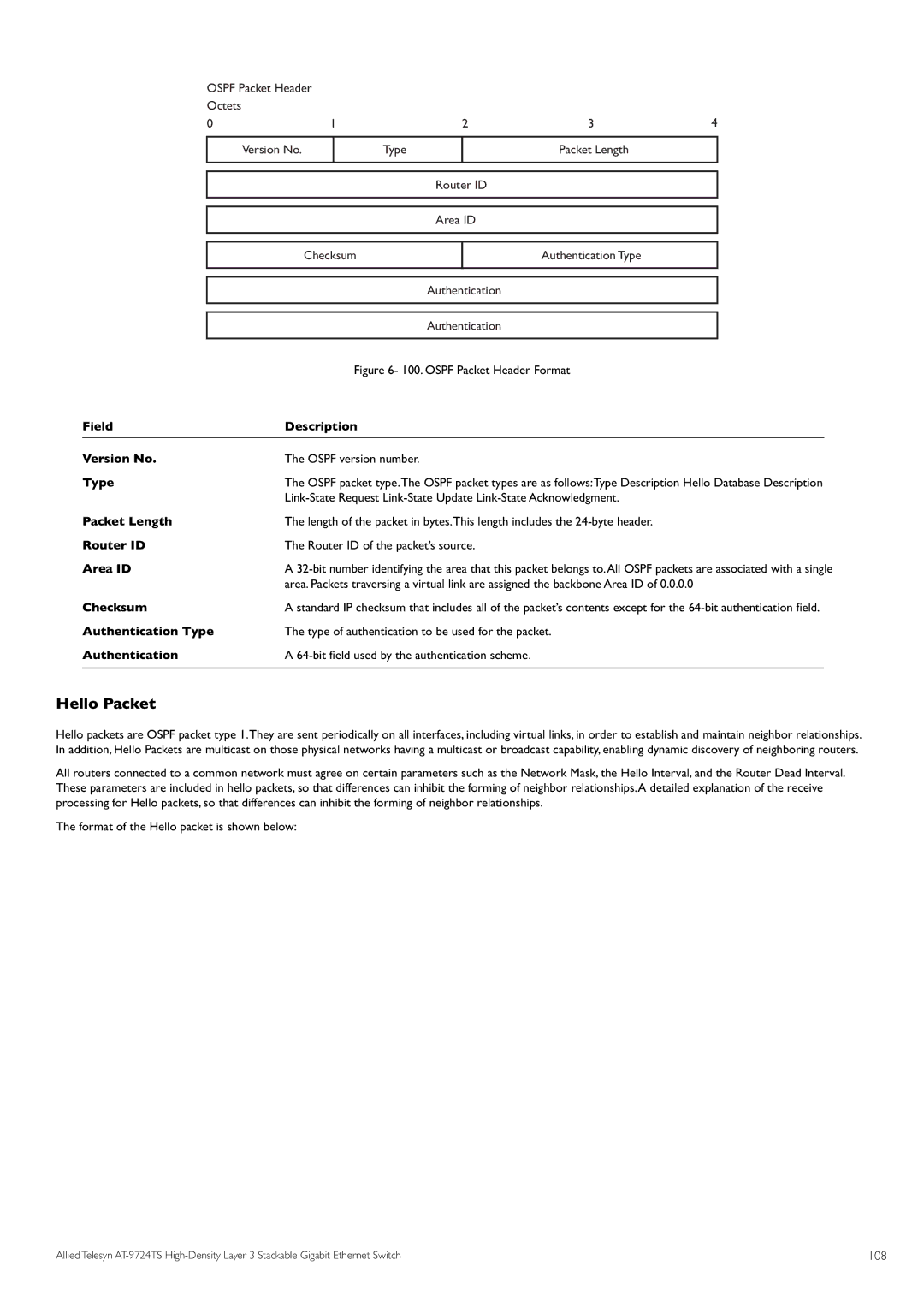
OSPF Packet Header |
|
|
|
|
|
|
Octets |
|
|
|
|
|
|
0 | 1 | 2 | 3 | 4 | ||
|
|
|
|
|
|
|
Version No. |
|
| Type |
| Packet Length |
|
|
|
|
|
|
|
|
|
|
|
|
|
| |
|
|
| Router ID |
|
| |
|
|
|
|
|
| |
|
|
|
|
|
| |
|
|
| Area ID |
|
| |
|
|
|
|
|
|
|
Checksum
Authentication Type
|
| Authentication |
| |
|
|
|
| |
|
|
| ||
|
| Authentication |
|
|
|
|
|
| |
|
| Figure 6- 100. OSPF Packet Header Format | ||
Field | Description |
| ||
Version No. | The OSPF version number. | |||
Type | The OSPF packet type.The OSPF packet types are as follows:Type Description Hello Database Description | |||
Packet Length | ||||
The length of the packet in bytes.This length includes the | ||||
Router ID | The Router ID of the packet’s source. | |||
Area ID | A | |||
Checksum | area. Packets traversing a virtual link are assigned the backbone Area ID of 0.0.0.0 | |||
A standard IP checksum that includes all of the packet’s contents except for the | ||||
Authentication Type | The type of authentication to be used for the packet. | |||
Authentication | A |
| ||
Hello Packet
Hello packets are OSPF packet type 1.They are sent periodically on all interfaces, including virtual links, in order to establish and maintain neighbor relationships. In addition, Hello Packets are multicast on those physical networks having a multicast or broadcast capability, enabling dynamic discovery of neighboring routers. All routers connected to a common network must agree on certain parameters such as the Network Mask, the Hello Interval, and the Router Dead Interval.
These parameters are included in hello packets, so that differences can inhibit the forming of neighbor relationships.A detailed explanation of the receive processing for Hello packets, so that differences can inhibit the forming of neighbor relationships.
The format of the Hello packet is shown below:
Allied Telesyn | 108 |
